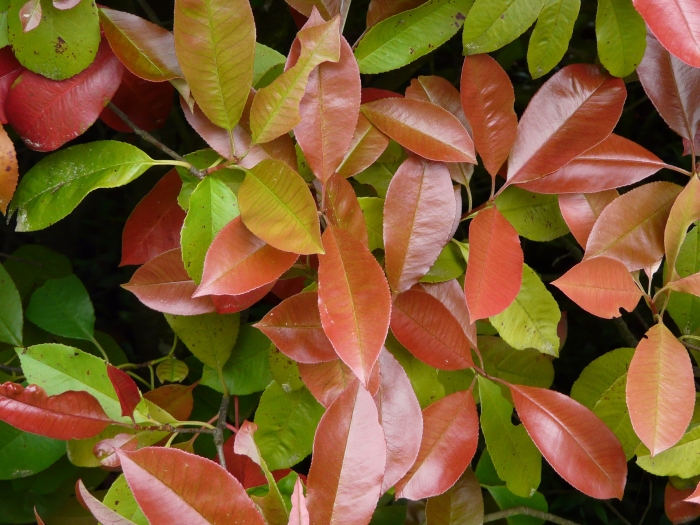Red Tip Photinia
(Photinia ×fraseri)
Red Tip Photinia (Photinia ×fraseri)
/
/

Père Igor
CC BY-SA 3.0
Image By:
Père Igor
Recorded By:
Copyright:
CC BY-SA 3.0
Copyright Notice:
Photo by: Père Igor | License Type: CC BY-SA 3.0 | License URL: https://creativecommons.org/licenses/by-sa/3.0 | Uploader: Père Igor | Publisher: Wikimedia Commons | Title: Photinia_x_fraseri_feuillage.JPG | Notes: {{Information |Description ={{en|1=Honeybee - Apis mellifera on catnip - Nepeta x Faassenii}} {{de|1=Honigbiene an Katzenminze}} {{es|1=Abeja - apis melifera y gatera}} |Source ={{own}} |Author =[[User:Orzolo|Orzolo]] |Date =2 |

























Estimated Native Range
Summary
Photinia × fraseri, commonly known as Red Tip Photinia or Christmas Berry, is an evergreen shrub resulting from a cross between Photinia glabra and Photinia serratifolia. It is not a naturally occurring plant in the wild but has been widely cultivated for ornamental use. This hybrid typically grows to a height and width of up to 16 feet (4.9 meters), featuring a rounded form with dense foliage. The leaves are dark green and glossy, with new growth emerging in a striking crimson red, which is particularly showy in the spring. Flowering occurs in mid to late spring, with small white flowers that are moderately showy, followed by red to black berries that can attract birds.
Red Tip Photinia is valued for its vibrant new foliage and is often used for hedges, screens, and as a specimen plant in residential and commercial landscapes. It thrives in full sun to part shade and prefers well-drained soil, though it is adaptable to various soil types. Regular pruning is recommended to encourage the colorful new growth and maintain a tidy appearance. While generally low-maintenance, it can be susceptible to leaf spot diseases, especially when planted too closely or in poorly ventilated areas. Overwatering should be avoided to prevent root rot.CC BY-SA 4.0
Red Tip Photinia is valued for its vibrant new foliage and is often used for hedges, screens, and as a specimen plant in residential and commercial landscapes. It thrives in full sun to part shade and prefers well-drained soil, though it is adaptable to various soil types. Regular pruning is recommended to encourage the colorful new growth and maintain a tidy appearance. While generally low-maintenance, it can be susceptible to leaf spot diseases, especially when planted too closely or in poorly ventilated areas. Overwatering should be avoided to prevent root rot.CC BY-SA 4.0
Plant Description
- Plant Type: Shrub
- Height: 10-15 feet
- Width: 10-15 feet
- Growth Rate: Moderate
- Flower Color: White
- Flowering Season: Spring
- Leaf Retention: Evergreen
Growth Requirements
- Sun: Full Sun, Part Shade
- Water: Medium
- Drainage: Fast, Medium, Slow
Common Uses
Bee Garden, Bird Garden, Border Plant, Hedges, Low Maintenance, Showy Flowers, Street Planting
Natural Habitat
A garden origin hybrid and widely cultivated for ornamental use
Other Names
Common Names: Fraser Photinia
Scientific Names: Photinia ×fraseri
GBIF Accepted Name: